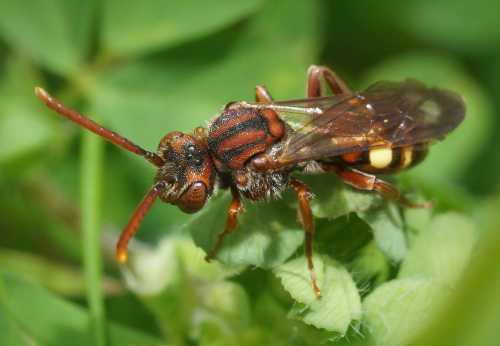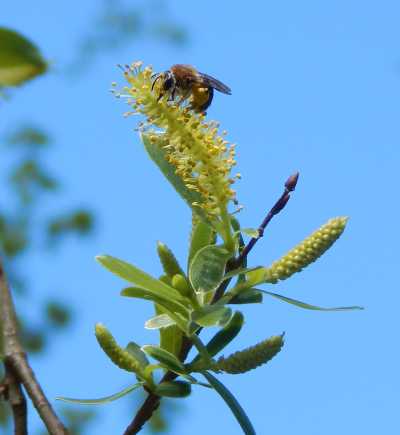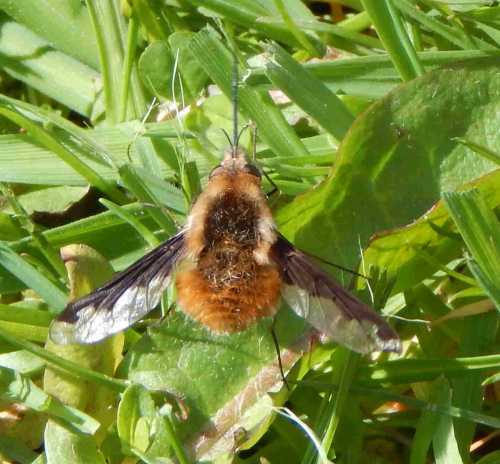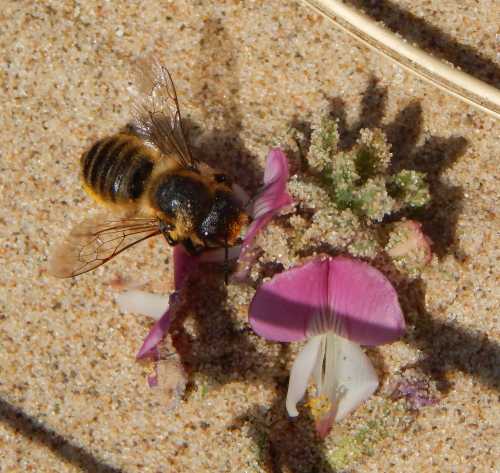Fork-Jawed Nomad Bee - Nomada ruficornis
From April through to June or July, the Fork-jawed nomad bee - Nomada ruficornis may be seen in a variety of habitats, from woodlands and flowery brownfield sites, to heathland, grassland and even gardens.
About The Fork-Jawed Nomad Bee - Nomada ruficornis
Belonging to the bee family, Apidae, the Fork-jawed nomad bee - Nomada ruficornis occurs commonly in the UK and also in regions of the USA. This species was recorded in Georgia and Transcaucasia in 2016.
Along with all Apidae, this species falls into the long-tongued category.
 Fork-Jawed Nomad Bee - Nomada ruficornis
Fork-Jawed Nomad Bee - Nomada ruficornisThese medium-sized nomad bees measure about 7-8mm in length for females, with males being a little smaller.
Note the red markings and also the pale hairs on the thorax.
Foraging habits
Look out for these bees foraging on daisies, forget-me-knots, greater stitchwort, dandelions, wild garlic (ramsons), heathers and a variety of flowering shrubs.
Target host species
As a cleptoparasite, the Fork-jawed nomad bee targets the Orange-tailed mining bee, Andrena haemorrhoea, and this species can sometimes be seen around willows, a favourite food source of the target host.
 Orange-tailed mining bee, Andrena haemorrhoea on willow catkins.
Orange-tailed mining bee, Andrena haemorrhoea on willow catkins.If you found this page helpful or interesting, I'd really be grateful if you would share it with others - if not this page, perhaps another, such as Gardening For Bees.
Thank you so much :) .


